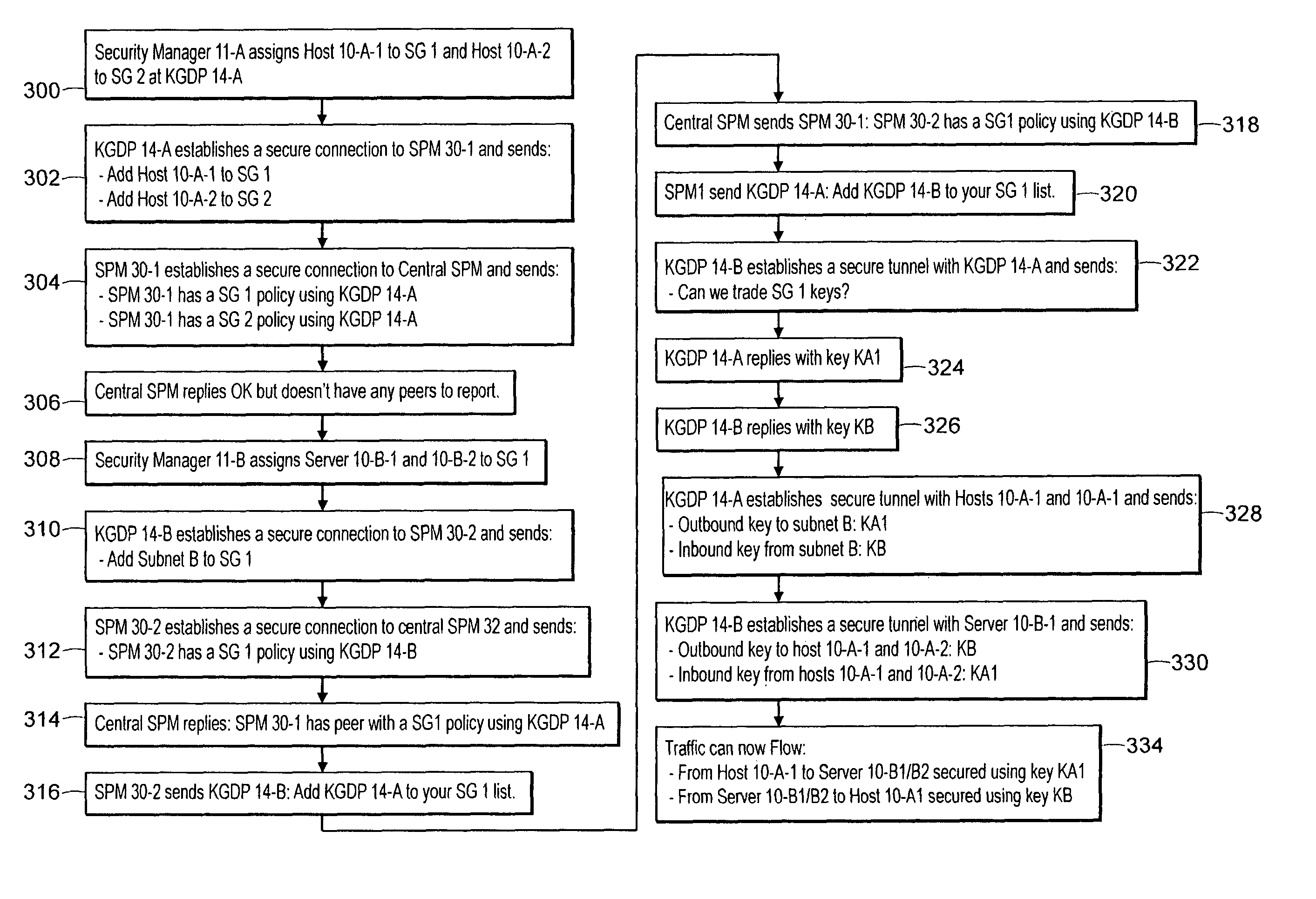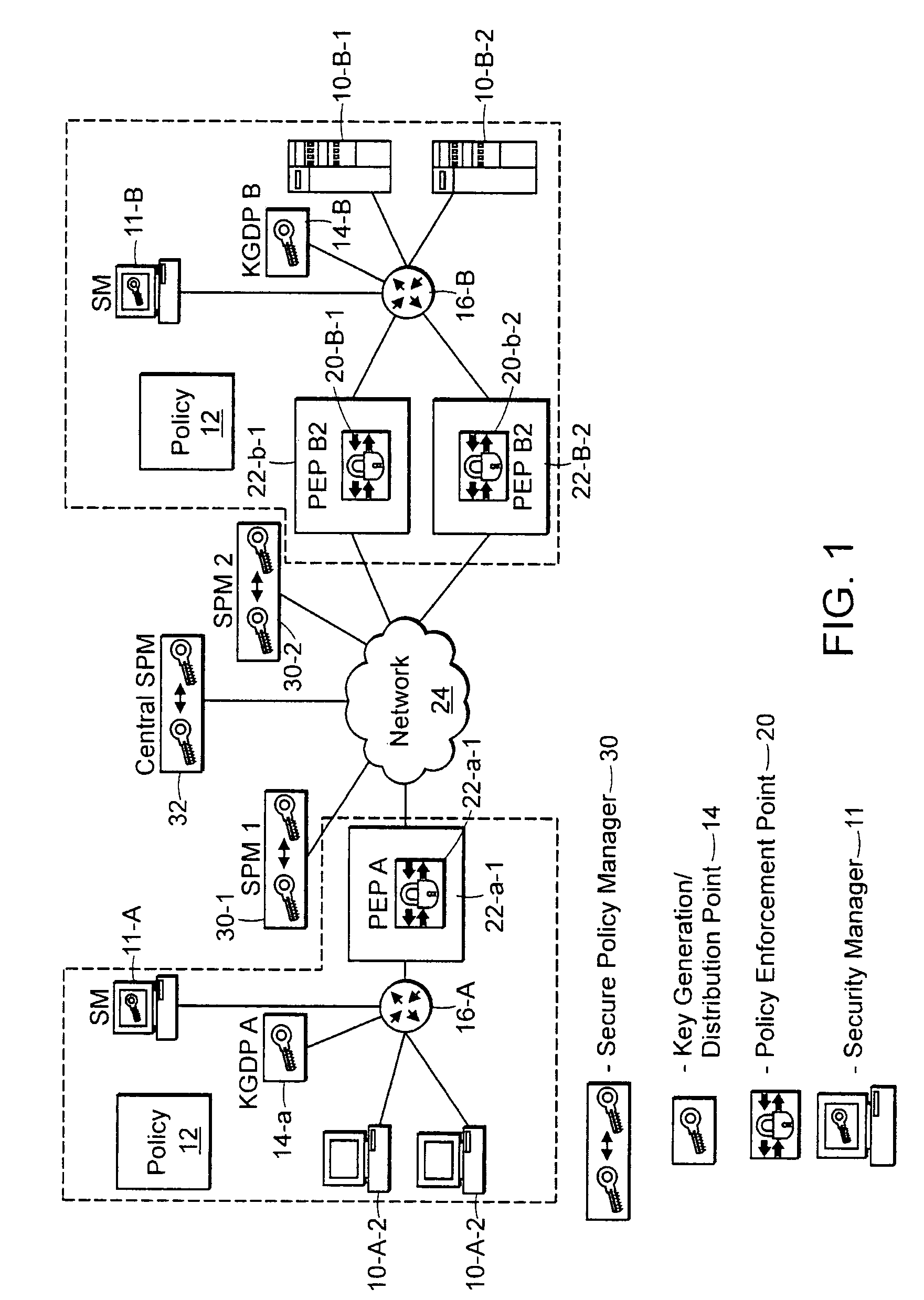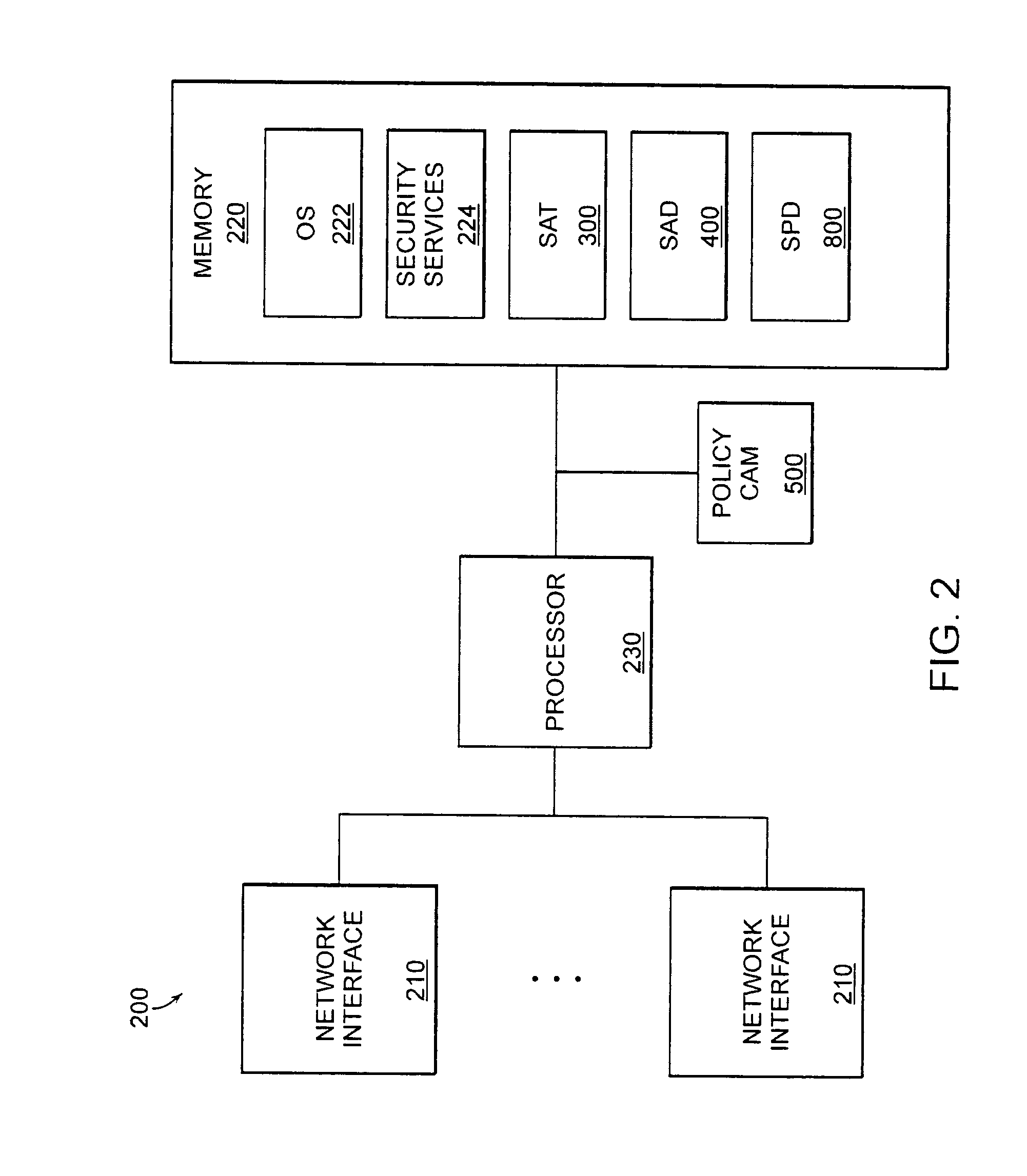Securing network traffic by distributing policies in a hierarchy over secure tunnels
a network traffic and policy distribution technology, applied in the field of secure message traffic, can solve the problems of memory and speed difficulties, increase in network time spent performing negotiations and rekeying, and complex /pki management, and achieve the effect of reducing the complexity of pki management and reducing the difficulty of managing
- Summary
- Abstract
- Description
- Claims
- Application Information
AI Technical Summary
Benefits of technology
Problems solved by technology
Method used
Image
Examples
Embodiment Construction
[0050]A description of a preferred embodiment of the invention follows. An environment as shown in FIG. 1, in which the invention may be implemented generally has a number of data processors and functions including end nodes 10, a managing module (i.e. Security Manager (SM) 12), a distribution point (i.e. a Key Generation and Distribution Point (KGDP) 14), and a security module (i.e. Secure Gateways (SGWs) 22), connected by interfacing a communication network such as at least two inter-networking devices 16 (i.e. such as routers / switches). One or more of the SGWs 22 has an associated Policy Enforcement Point (PEP) function 20. PEP is a software module that executes in a SGW on the data path that performs packet encryption and decryption as well as IPsec header generation on packets requiring security. It also passes or drops packets, and may be configured to perform additional functionality such as Static NAT or fragmentation. It is typically configured with security policies and SA...
PUM
 Login to View More
Login to View More Abstract
Description
Claims
Application Information
 Login to View More
Login to View More - R&D
- Intellectual Property
- Life Sciences
- Materials
- Tech Scout
- Unparalleled Data Quality
- Higher Quality Content
- 60% Fewer Hallucinations
Browse by: Latest US Patents, China's latest patents, Technical Efficacy Thesaurus, Application Domain, Technology Topic, Popular Technical Reports.
© 2025 PatSnap. All rights reserved.Legal|Privacy policy|Modern Slavery Act Transparency Statement|Sitemap|About US| Contact US: help@patsnap.com



